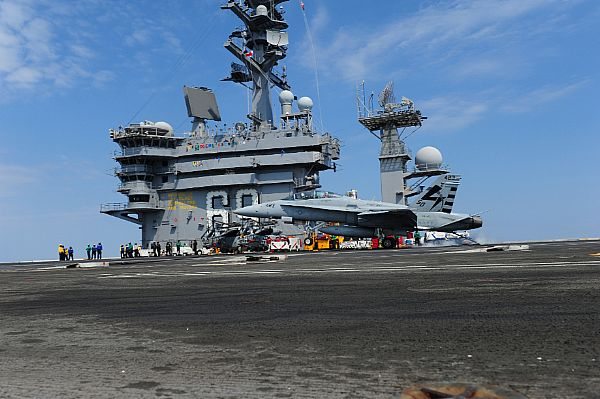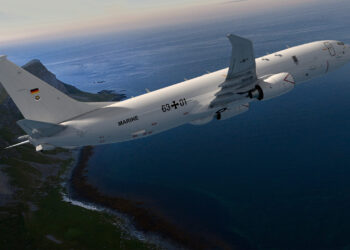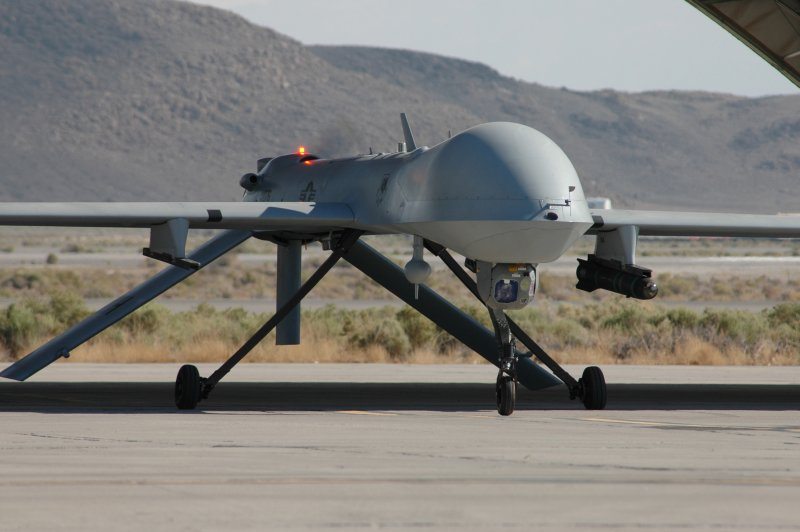Select pilots in early 2012 will commence testing new flight control software, funded in part by the Office of Naval Research (ONR), intended to facilitate aircraft landings on Navy carrier decks with unprecedented accuracy.
“The precision that we can bring to carrier landings in the future will be substantial,” said Michael Deitchman, deputy chief of naval research for naval air warfare and weapons. “The flight control algorithm has the potential to alter the next 50 years of how pilots land on carrier decks.”
Navy and Marine Corps aviators conducting carrier landings today line up with a moving flight deck in a complicated process. They must constantly adjust their speed and manipulate the aircraft’s flight control surfaces-ailerons, rudders and elevators-to maintain the proper glide path and alignment to the flight deck for an arrested landing. Throughout their approach, pilots eye a set of lights-known as the Fresnel lens-located on the left side of the ship. It signals whether they are coming in too high or too low.
The new algorithm embedded in the flight control software augments the landing approach. Coupled with an experimental shipboard light system called a Bedford Array and accompanying cockpit heads-up display symbols, the software ties the movement of the pilot’s control stick directly to the aircraft’s flight path. Instead of constantly adjusting the plane’s trajectory indirectly through attitude changes, the pilot maneuvers the aircraft to project a dotted green line in the heads-up display over a target light shining in the landing area.
“It is almost like a video game,” said James “Buddy” Denham, the senior engineer who has been leading the research and development efforts at Naval Air Systems Command. “You’re tracking a shipboard stabilized visual target with a flight path reference, and the airplane knows what it needs to do to stay there.”
ONR funded the project as part of its focus on sea-based aviation, one of five Navy and Marine Corps research areas designated as a national naval responsibility.
The software has been incorporated into an F/A-18 E/F Super Hornet flight simulator. Researchers plan to conduct a study with U.S. Navy pilots and British Royal Navy pilots who will fly the simulator to obtain data on workload reduction and touchdown performance. Once the results are tabulated, the engineers plan to integrate the refined algorithm onto an actual aircraft for flight tests and demonstrations.
If the tests are successful, the software could be integrated aboard current and future aircraft to change the way carrier-based aviators have landed aboard ships for more than half a century-controlled crash landings. Increasing the precision of landings will boost pilot safety and reduce training requirements necessary to perfect carrier-landing skills. It could lower aircraft life cycle costs by reducing maintenance and avoiding repairs caused by hard landings.
ONR provides the science and technology necessary to maintain the Navy and Marine Corps’ technological advantage. Through its affiliates, ONR is a leader in science and technology with engagement in 50 states, 70 countries, 1,035 institutions of higher learning and 914 industry partners. ONR employs approximately 1,400 people, comprising uniformed, civilian and contract personnel, with additional employees at the Naval Research Lab in Washington, D.C.











